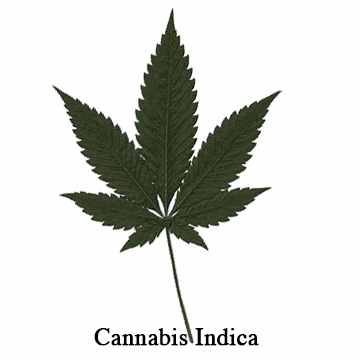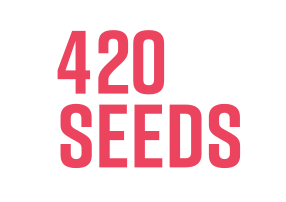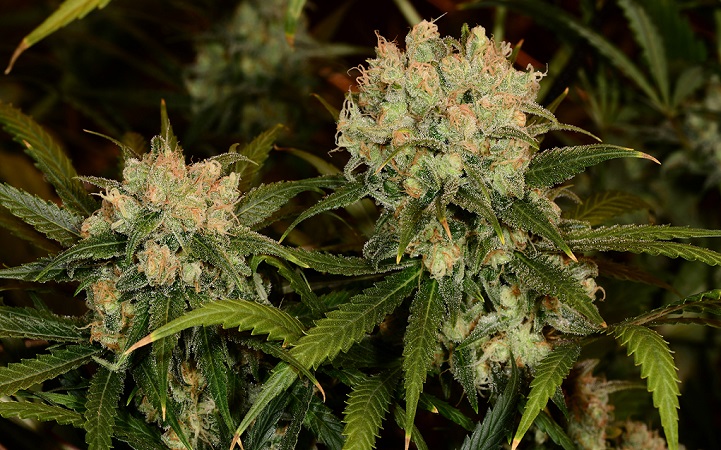The two main types of cannabis are Indicas and Sativas. There is also Ruderalis, which is used for creating autoflowering strains.
Indica strains versus Sativa strains
Indica strains tend to be used for the relief of low-level, chronic pain. They can also treat anxiety or stress. Their third common use is to calm nausea. Sativa strains tend to be used for the relief of intense pain. They can also treat anxiety and depression. Their third common use is to treat lack of appetite.
There are also clear physical differences between the two types of cannabis plants. Indica strains are short and bushy with broad leaves. Sativa strains, by contrast, are tall and slender with narrow leaves. Today, however, most strains are hybrids. In other words, they are a mixture of Indica and Sativa. Some of them also include Ruderalis. This allows seed banks to create very interesting and versatile strains. It also allows them to address niche markets, for example, by creating strains which grow very quickly and tolerate poor conditions.
Here is a quick guide to the main forms of cannabis available today.
Cannabis Indica
Cannabis Indica is believed to have originated in the Hindu Kush mountain  range between Afghanistan and Pakistan. This is the reason why many of the best Indica strains have “Kush” in their name. In fact, even those which don’t often trace their genetics back to this part of the world.
range between Afghanistan and Pakistan. This is the reason why many of the best Indica strains have “Kush” in their name. In fact, even those which don’t often trace their genetics back to this part of the world.
Life on a mountain can be harsh. There are often extreme variations in temperature as well as harsh winds, even in summer. It, therefore, makes sense for a plant to stay as close to the ground as possible. This is the reason why Indicas have their characteristic “short and broad” silhouette. For the most part, they will grow between 1M and 1.8M in height. This is much shorter than their Sativa relatives. Indicas have broad leaves so that they can capture the maximum amount of sunlight. In the wild, this allows them to survive the short days of winter. In cultivation, it means that Indicas are generally the best option for more challenging growing conditions.
Although Indicas do contain THC, they are usually more valued for their CBD content. They tend to be used for their soothing qualities, both physical and mental.
Conditions which respond to CBD include:
- Chronic pain (e.g. arthritis) and inflammation
- Spasms and seizures
- Nausea
- Anxiety and stress
- Insomnia
There are several other conditions which are believed to be responsive to CBD. These include diabetes, high blood pressure and eczema. At the current time, however, more research needs to be done to prove the link.
High-quality Indica strains
Listing every high-quality Indica strain would take a very long time, but here are some of the classic names:>
-
- Afghani
- OG Kush
- Northern Lights
- Big Bud
- Granddaddy Purple
Cannabis Sativa
Cannabis Sativa is believed to have originated in the Far East. That said, there are instances of it growing wild in many other countries. This could, however, be the result of seeds being accidentally transported there. It could also be the result of seeds (or plants) being transported on purpose for trade and then “escaping” into the wild. It is, however, probably fair to say that many of the best Sativa strains do trace their origins back to the Far East.
are instances of it growing wild in many other countries. This could, however, be the result of seeds being accidentally transported there. It could also be the result of seeds (or plants) being transported on purpose for trade and then “escaping” into the wild. It is, however, probably fair to say that many of the best Sativa strains do trace their origins back to the Far East.
Sativas are associated with flat landscapes. This means that they can grow as tall as they want and they often do. Even indoors, Sativa growers should reckon on their plants growing to at least two metres in height. Outdoors, they can reach double that - or more. They are, however, much more slender than Indicas. This means they are generally very responsive to plant training. As Sativas come from much kinder environments than Indicas, they can afford to have long, slim leaves. These capture less sunlight, but they drain water more easily. This is exactly what you need in a place where there is no shortage of sunlight but where there can be intense rainstorms.
For the most part, Sativas are valued for their THC content. There is, however, a modern twist on this fact. Today, many of the super-high CBD strains are actually Sativa dominant. These, however, are still very much the exceptions. Generally, Sativas are used to treat intense pain and for their uplifting qualities.
Conditions which respond to THC include:
- Intense pain (e.g. migraines)
- Spasticity
- Glaucoma
- Lack of appetite
- Anxiety and depression
THC also has anti-inflammatory properties but CBD is usually more effective at reducing inflammation.
High-quality Sativa strains
Again, there are a huge number of great Sativa strains. Here are some of the classics:
- Amnesia Haze
- Super Silver Haze
- Sour Diesel
- Jack Herer
- Laughing Buddha
Cannabis Ruderalis
Cannabis Ruderalis is believed to have been first discovered in Russia. It is also found across central and Eastern Europe. Cannabis Ruderalis is smaller, slimmer and quicker-growing than both Cannabis Indica and Cannabis Sativa. Even left to its own devices outdoors, it will rarely grow above 0.6M. Its branches are slender, really more like thick stems. It does, however, have large leaves, in the same way as Indicas do. This is presumably for similar reasons given its geographic origins. Cannabis Ruderalis typically completes its growing cycle in five to seven weeks. In other words, it can be ready for harvest before either Indicas or Sativas have finished flowering. The real stand-out feature of Cannabis Ruderalis, however, is that its growth cycle is dependent on age rather than on light.
Even though Cannabis Ruderalis was overlooked for many years, it is now considered hugely valuable. It is now used to create shorter, faster, more robust versions of popular strains. In particular, it is essential for the creation of “autoflowering strains”. These are strains which follow a pre-determined growth cycle, regardless of light conditions. They are hugely popular with those new to cannabis. Basically, they allow beginners to focus on learning basic skills like feeding and watering first. Once they have mastered these, they can then move on to photoperiod strains.









